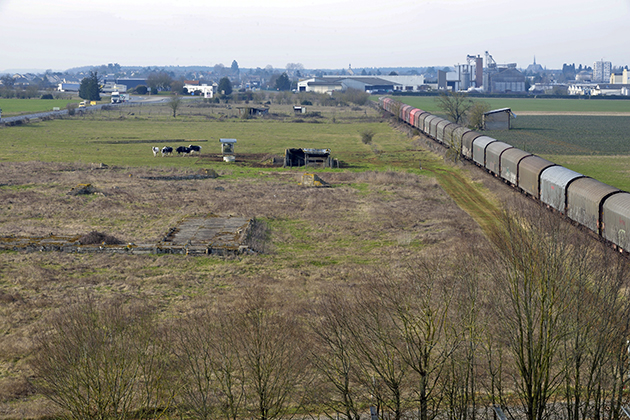A teacher’s view: interview with Jackie Pouzin

Jackie Pouzin teaches history and geography at Lycée Vadepied in Évron (Mayenne). For a number of years, he has been teaching his students about the history of the gypsy internment camp of Montreuil-Bellay, in Maine-et-Loire.
Jackie Pouzin. © Rights reserved
What place does gypsy history have in the school syllabus today?
At the lycée, the history of the gypsies comes in the première syllabus (age 16-17), under theme 2, “War of annihilation and genocide of the Jews and gypsies”.
The treatment of the subject by our school’s chosen textbook (published by Bordas) does not afford much space for the specific history of the gypsies in the Second World War. Very few documents refer explicitly to the gypsies: one photograph and one letter. So the history of the gypsies clearly forms part of the syllabus, but it is not very visible in the textbooks: the onus is therefore on the teacher. The time allocated is quite short – rarely more than two to three hours – which means we are only able to scratch the surface.
In terminale (final year, age 17-18), theme 1 of the syllabus, entitled “Societies’ relationship with their past”, offers the teacher a choice between “The historian and memories of the Second World War” and “The historian and memories of the Algerian War”.
So it is entirely possible to incorporate the history of the gypsies in your teaching about how memories of the Second World War have evolved; it is up to the teacher.
What explanation is there for the gypsies remaining absent from the collective memory for so long?
In my view, the specific history of the gypsies remains largely unknown to the general public firstly because of its great complexity, but also due to a lack of specific research until recently. I personally first began to take an interest in the fate of the gypsies in the Second World War when preparing for the Concours National de la Résistance et de la Déportation competition, which gave us a pretext to study the gypsy internment camp of Montsûrs. I then delved deeper into the subject through the works of historian Jacques Sigot. Sigot gathered oral accounts from former internees; Tony Gatlif’s film Korkoro was based on his research.
Personally, I remember going past the camp regularly as a child (it is on the D 347 road and my grandfather had a farm not far away), and witnessing the deterioration of the site. But no one was ever able to tell me what it was used for, except that they were barracks built during the war! To explain this long collective omission, we also need to take into account gypsy culture and their tradition of oral history.

View of the remains of the former Montreuil-Bellay camp. © B. Renoux / DRAC Pays de la Loire
So you sought to introduce your students to that history using the landscape of the former Montreuil-Bellay camp as a starting point?
As far as possible, I try to relate the history and geography syllabus to the local area and the students’ own environment. Every year, students are surprised to discover that there was a forced-labour camp at Évron. The memory of the camp has all but disappeared, and the only trace that remains today is the name of the road: “Rue du Camp”. So I talk about the different kinds of camps recorded in the department, then we broaden the discussion to regional level. This allows students to gain a better grasp of the logic behind the widespread use of camps.
Montrueil-Bellay was used to lock away gypsies about whom the authorities of the time were suspicious for various reasons. There was something reassuring to the local population about keeping them in camps. Similarly, the camp’s gradual disappearance from the landscape did not arouse any particular feelings, and there would be no trace of it left if it wasn’t for the interviews conducted by Jacques Sigot. It was not until 29 October 2016 that France’s responsibility for the internment of French gypsies was recognised by the French president.
What resources and materials do you use to teach this history from the perspective of the Montreuil-Bellay site?
I work primarily from archive photographs and, in particular, what aerial photographs are available, mostly taken by the IGN (National Geographic Institute). For example, the Évron camp is clearly visible in an aerial photo from 1947. These photographs are accessible to all on the IGN’s public website “Remonter le temps” (‘Going back in time’), as well as in édugéo, one of the educational resources of the Éduthèque portal. The IGN has digitised most of its photographic archives, so that, for a given area, you can download historic aerial photographs taken at regular intervals. This means you can follow spatial transformations, sometimes with a high degree of accuracy.
I mount the images using a specific software application (QGIS), which has a georeferencing plugin that allows you to superimpose the historic images over a modern geographical reference grid. What you end up with is a diachronic reading of the area in question. For the Montreuil-Bellay camp, I downloaded the available images to reproduce the gradual erasure of the camp, which was visible in the different aerial shots taken by the IGN.

